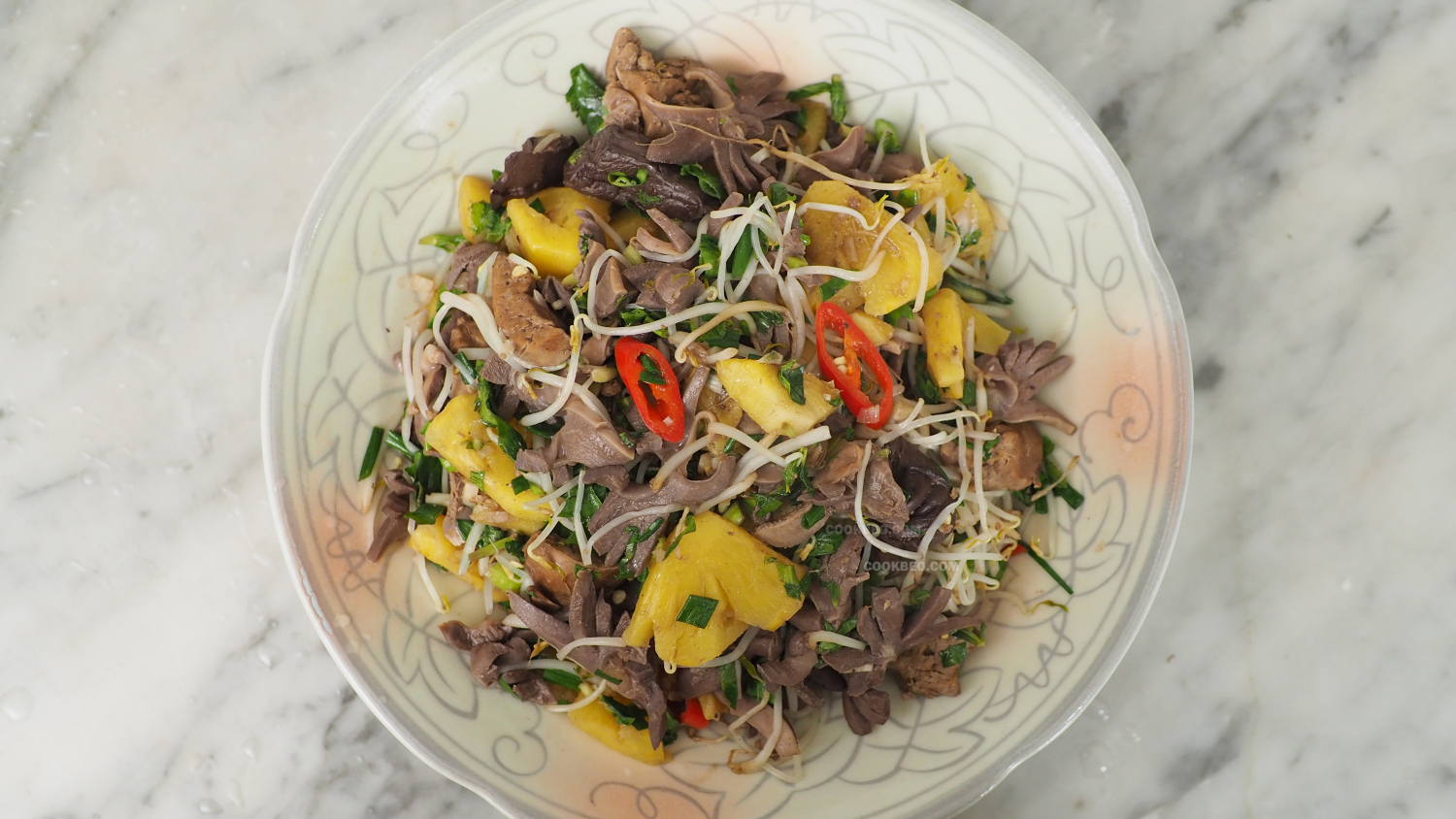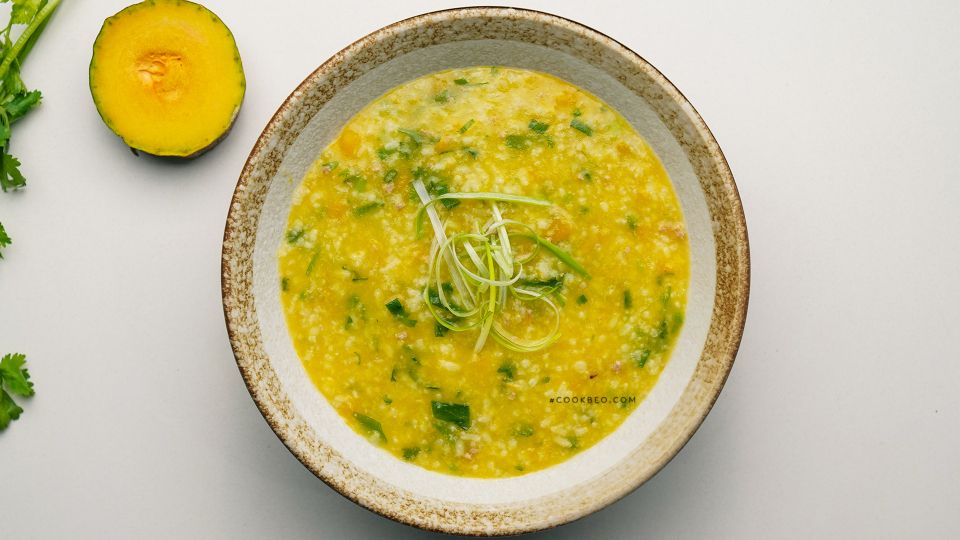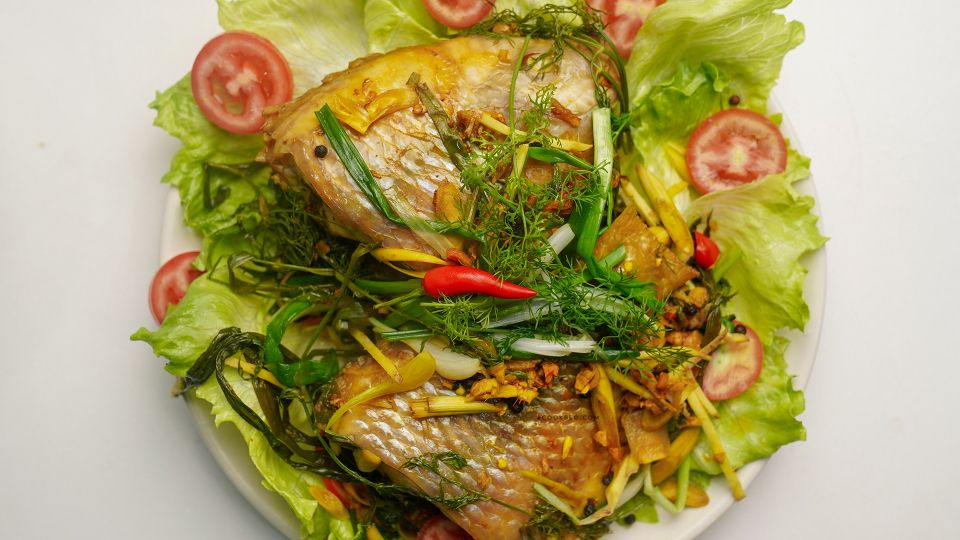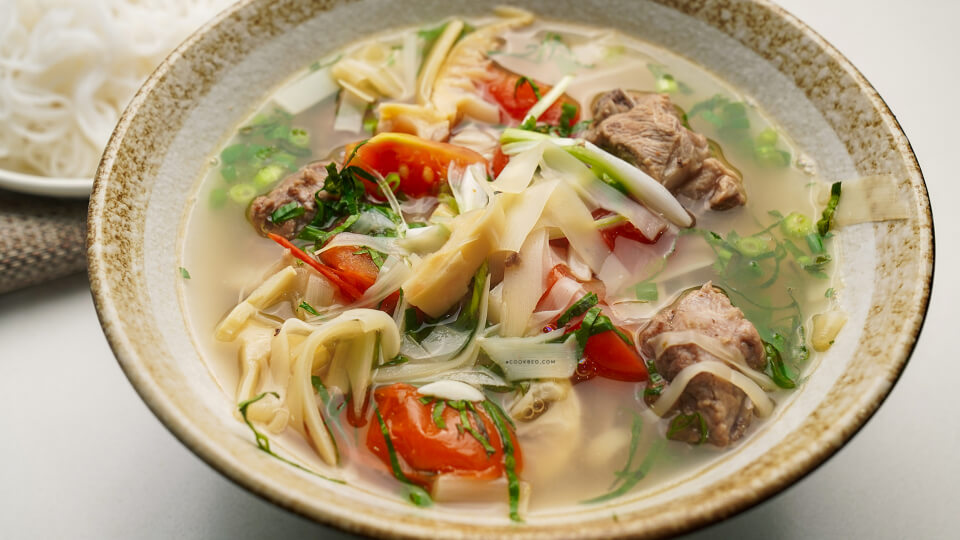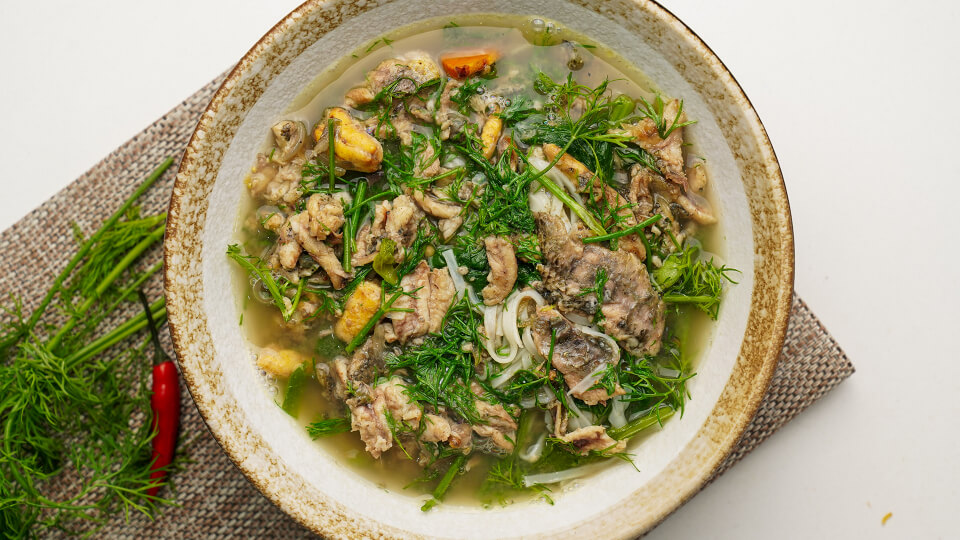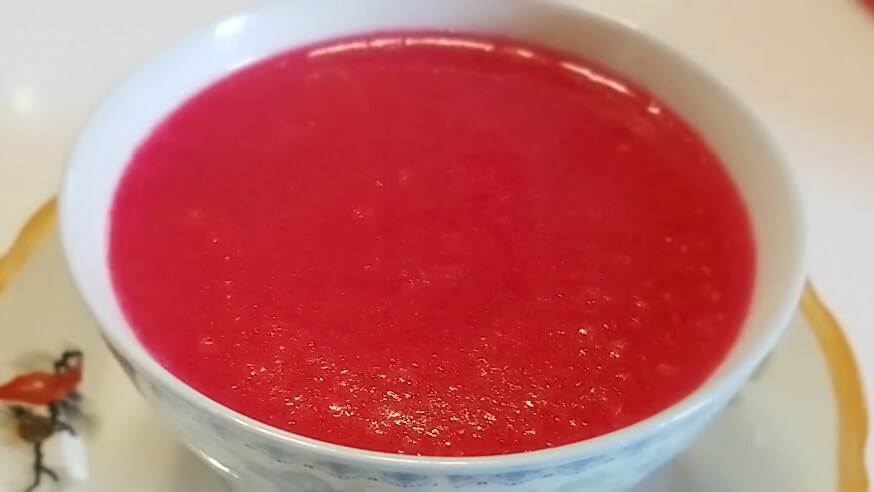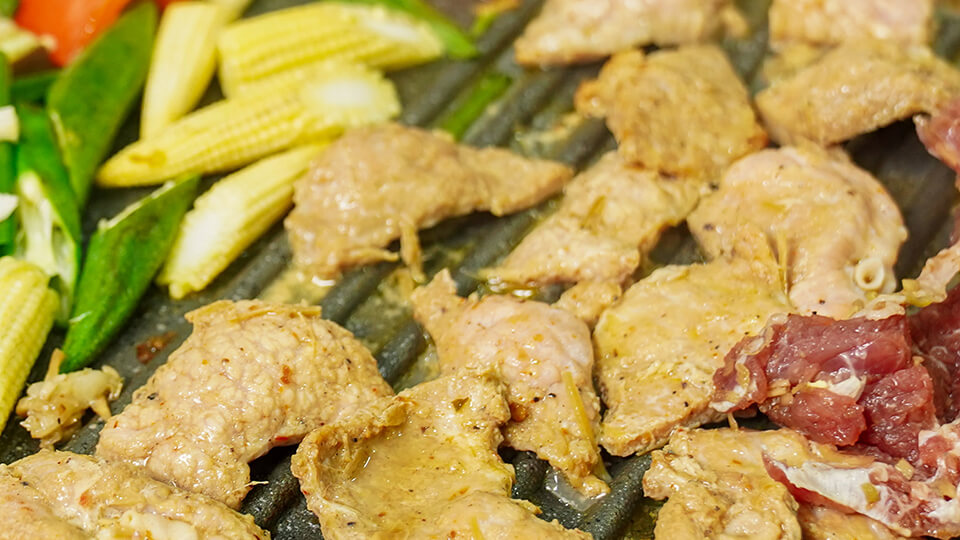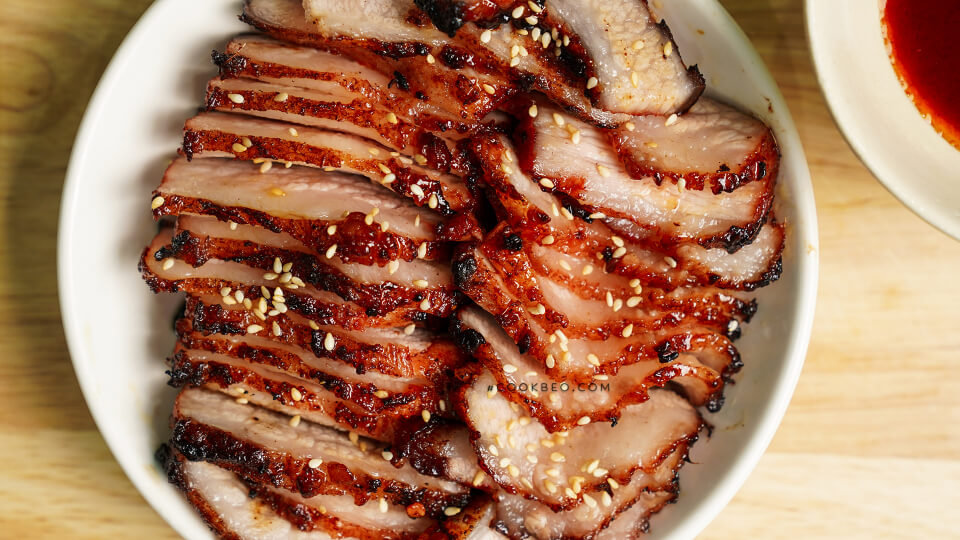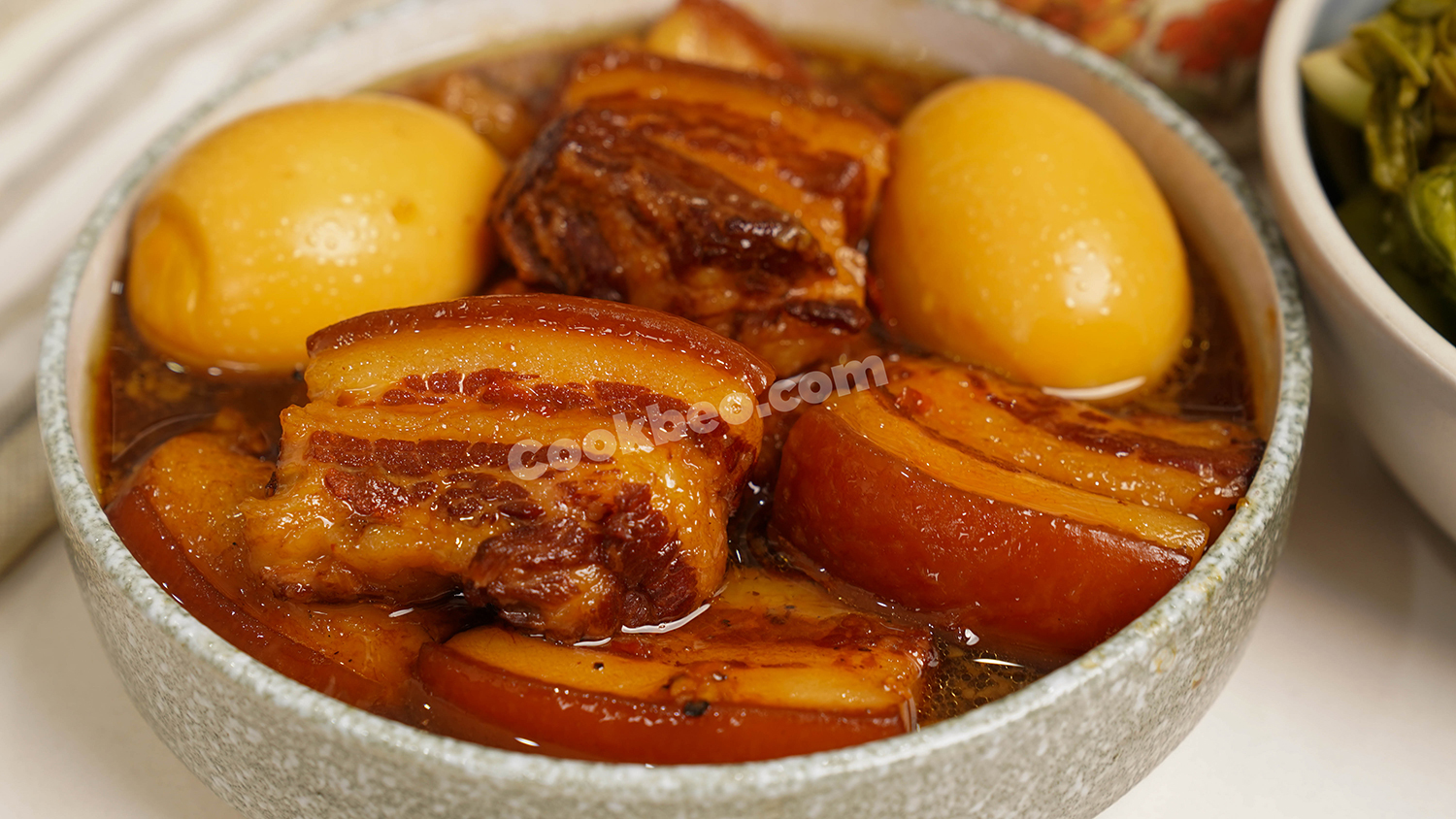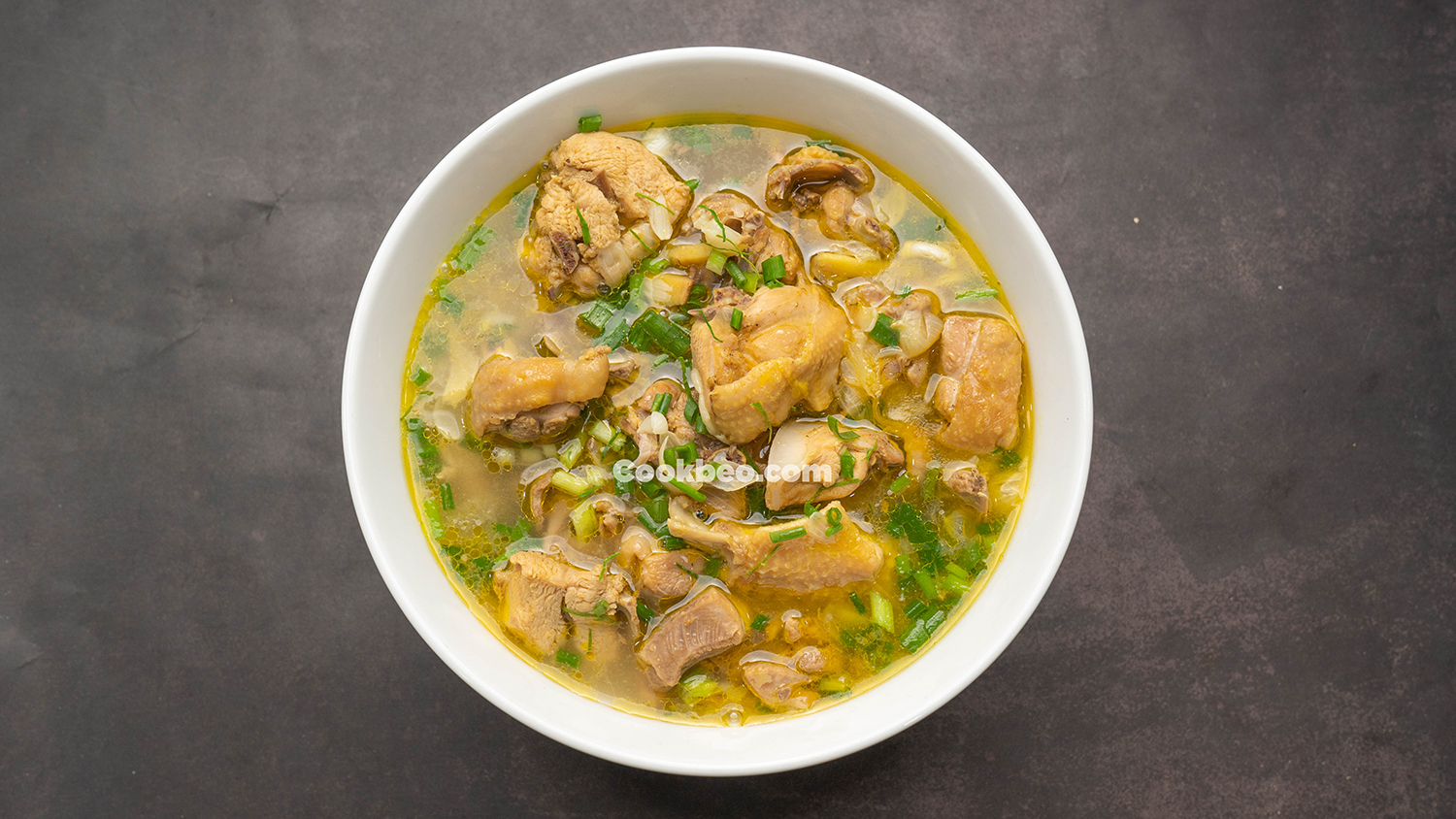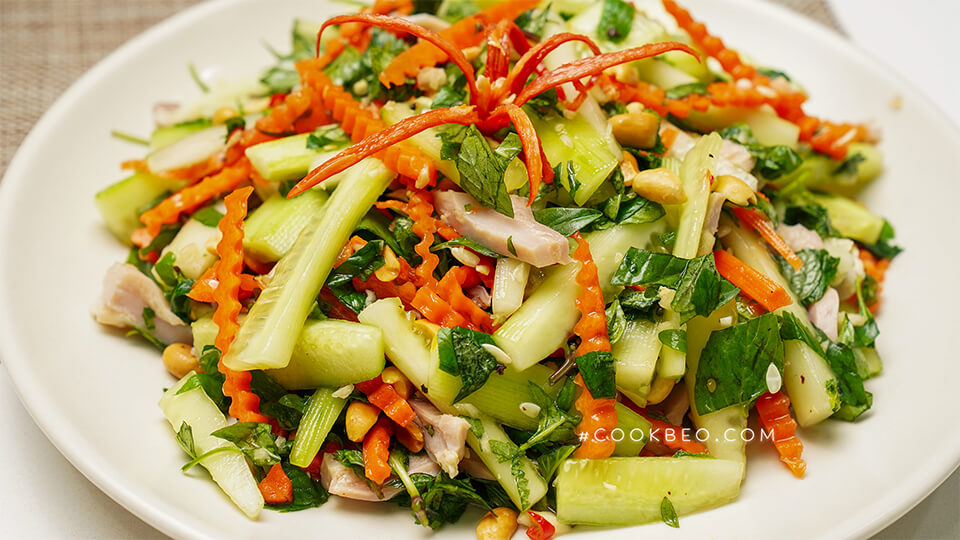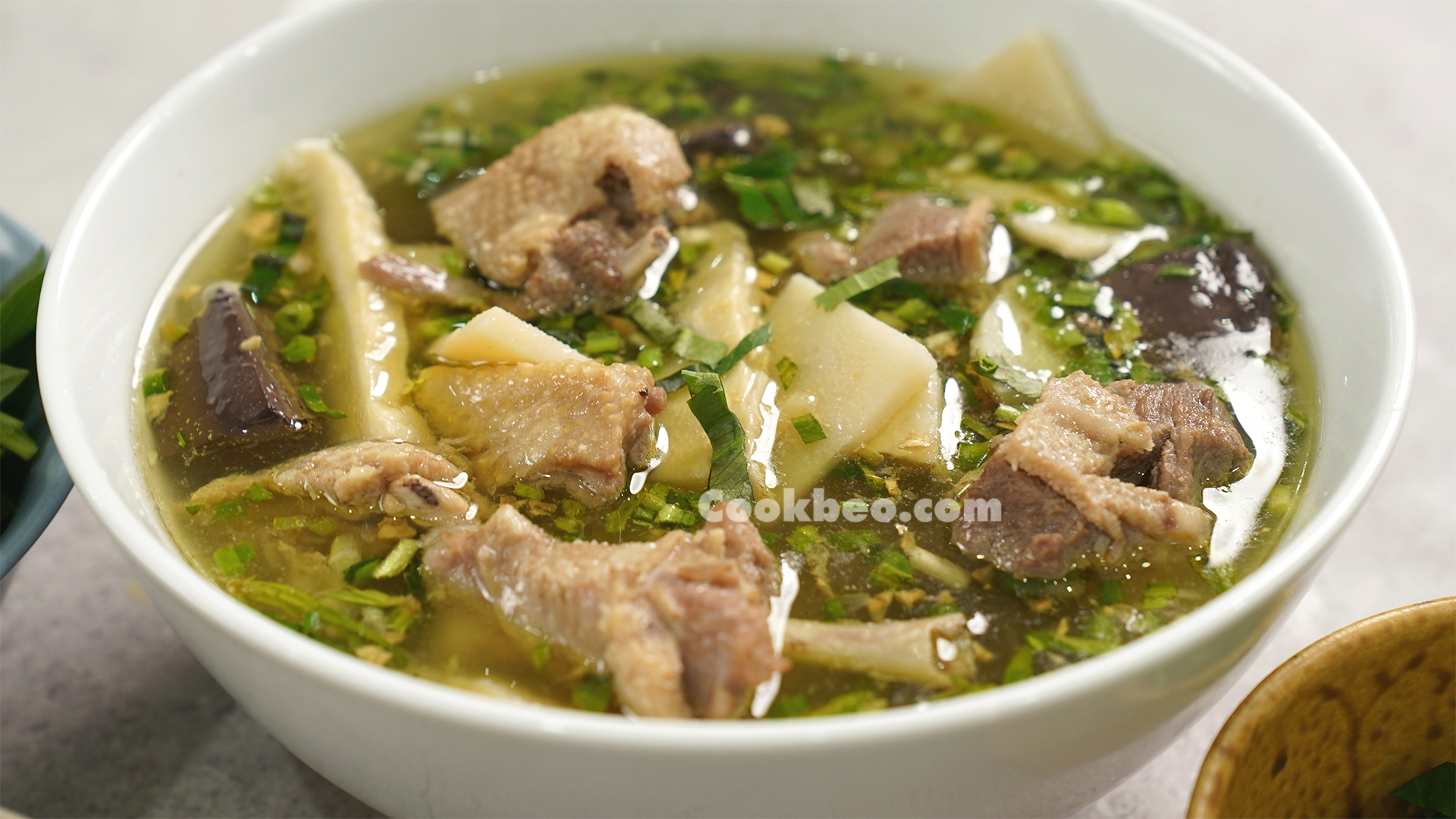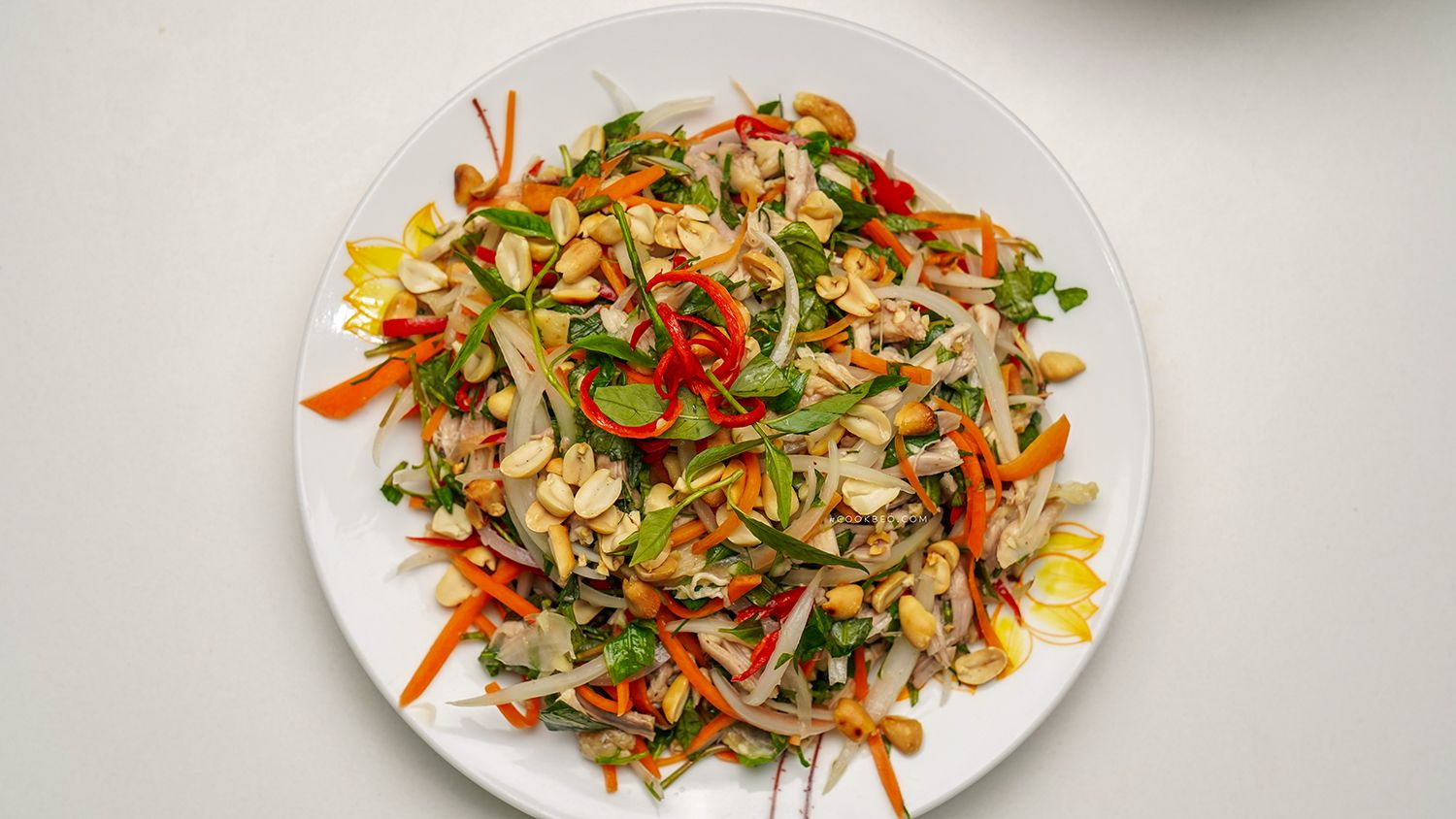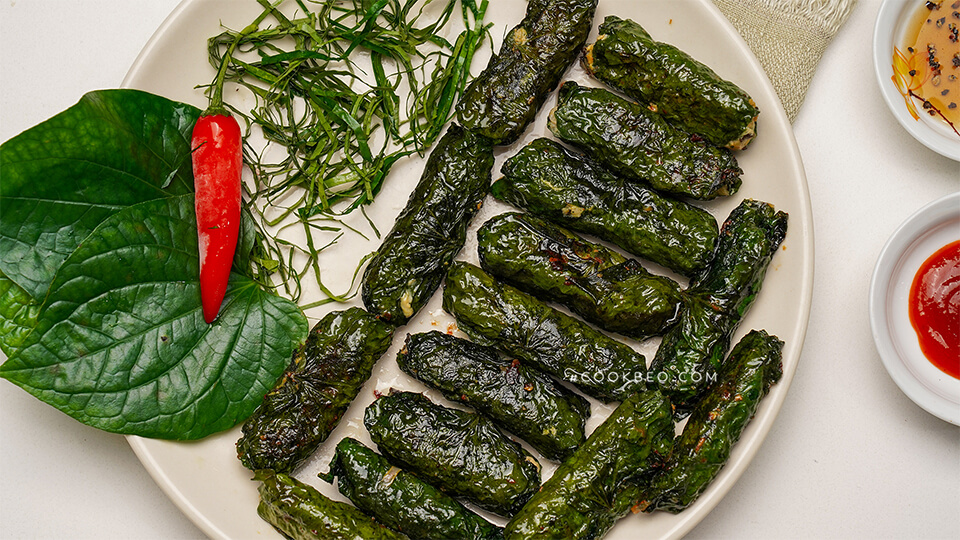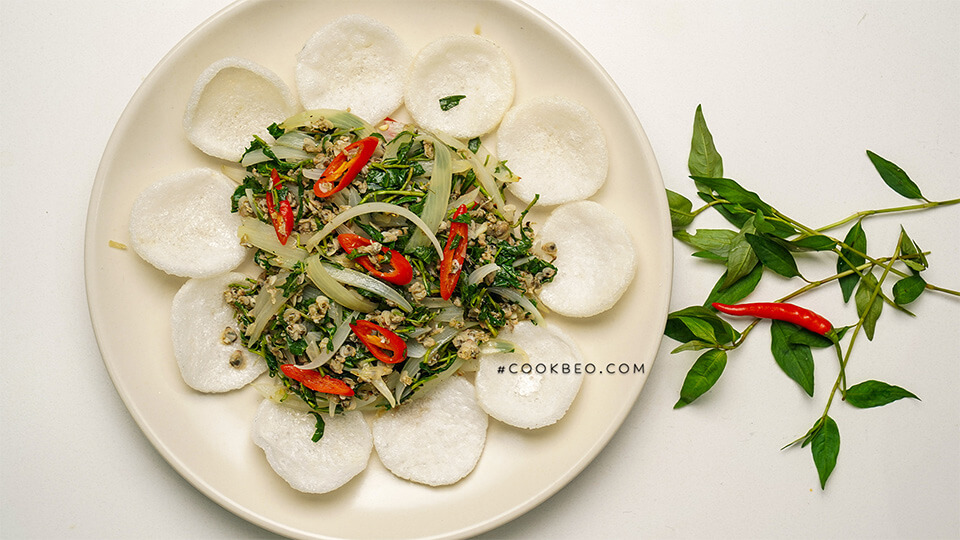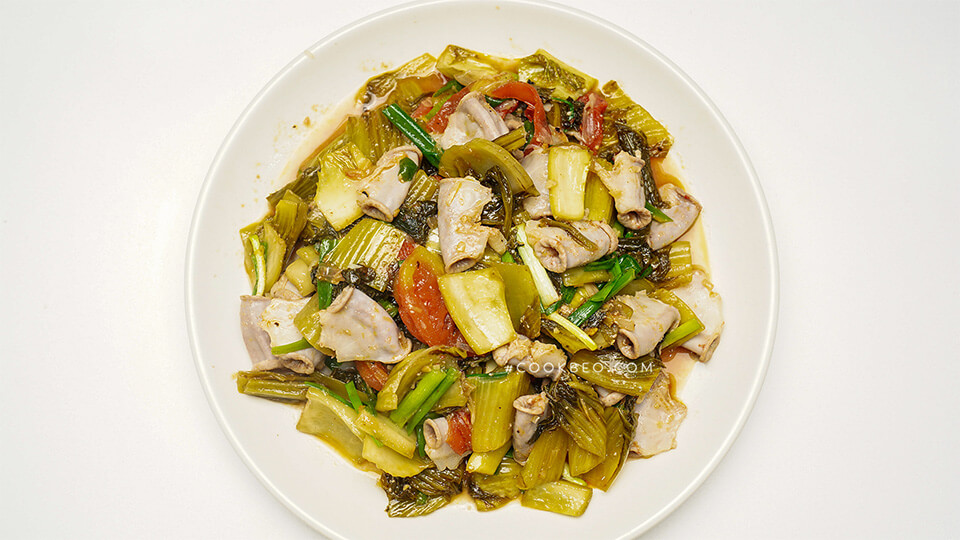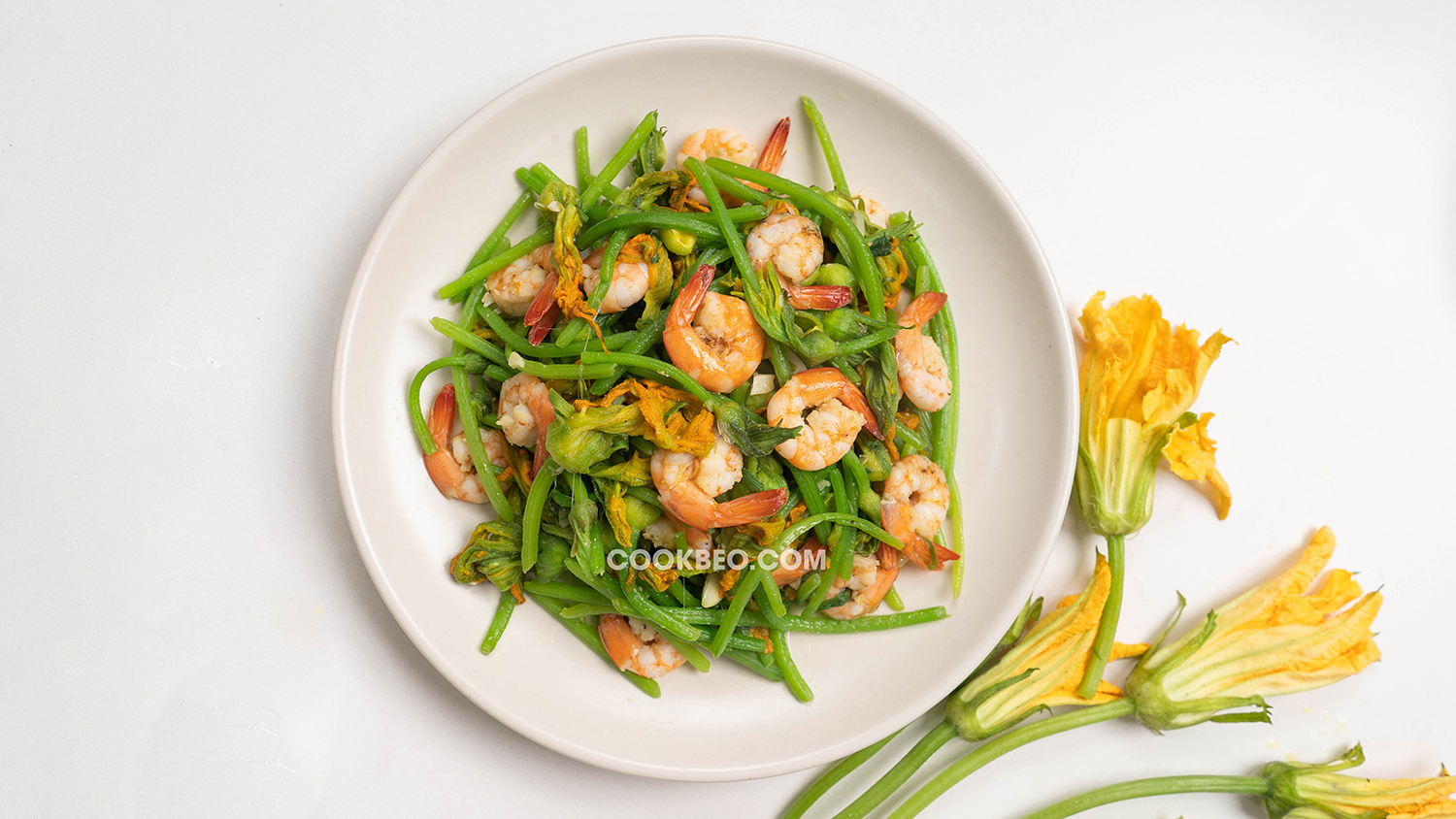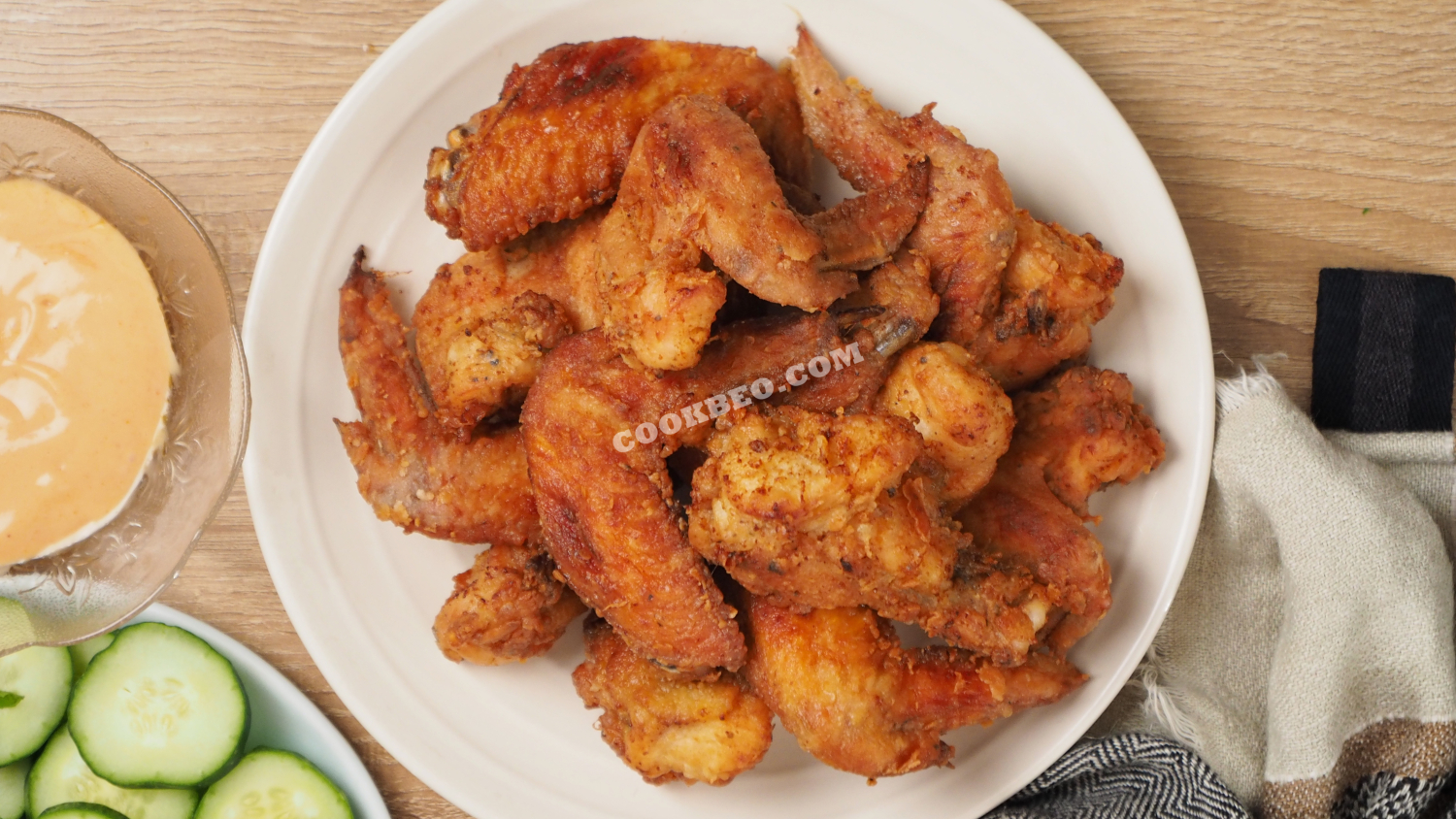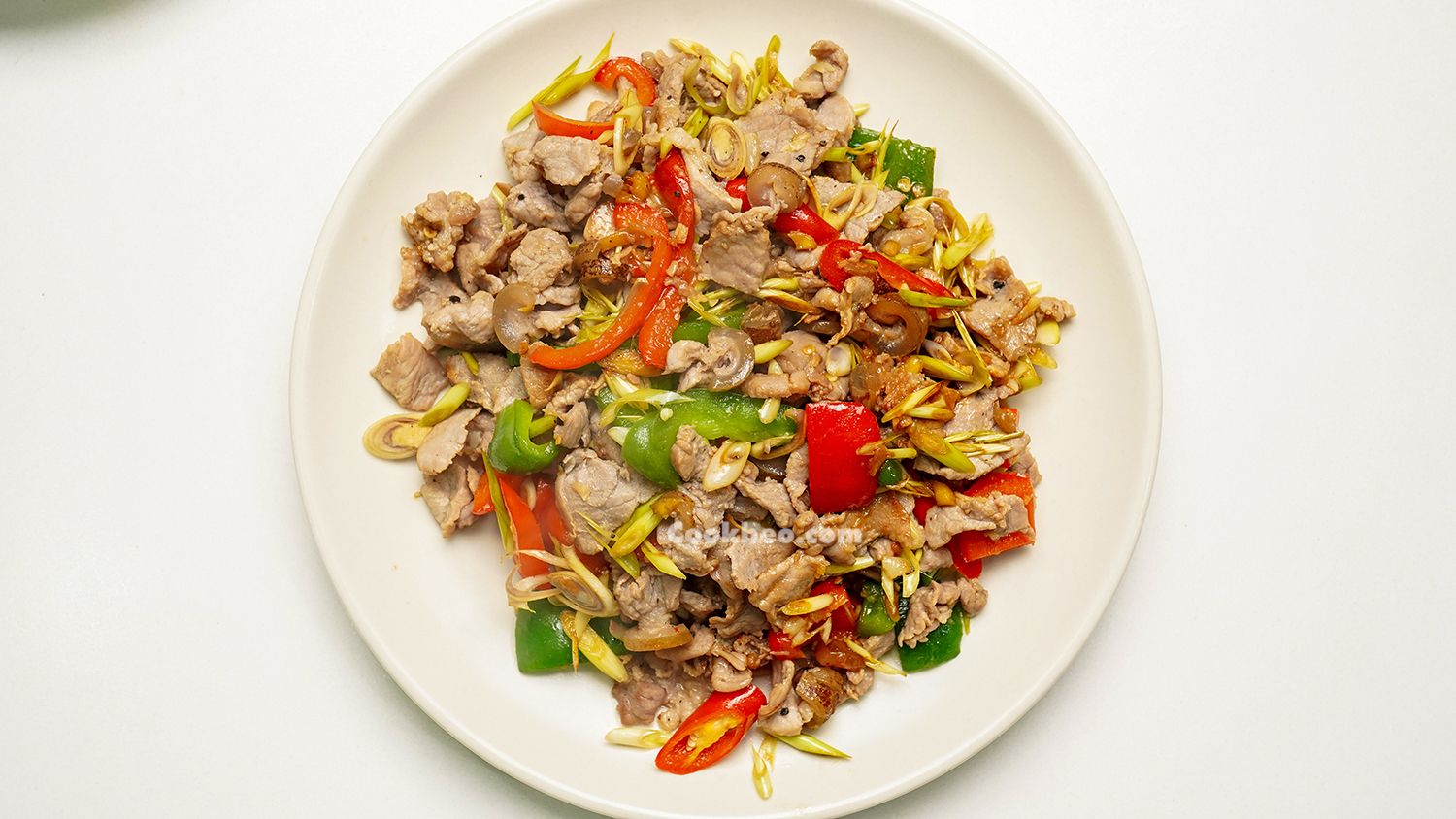How to Make Vietnamese Chao Trai
How to cook delicious Chao Trai in the Hanoi style, served with crispy fried dough sticks (quẩy) to add variety for the whole family. Chao Trai has a creamy texture thanks to the combination of glutinous rice flour and regular rice flour. The preparation process ensures the Trai is clean, free from fishy odor, infused with the aroma of rau răm (Vietnamese coriander), and a hint of fresh ginger warmth, suitable for both adults and children.
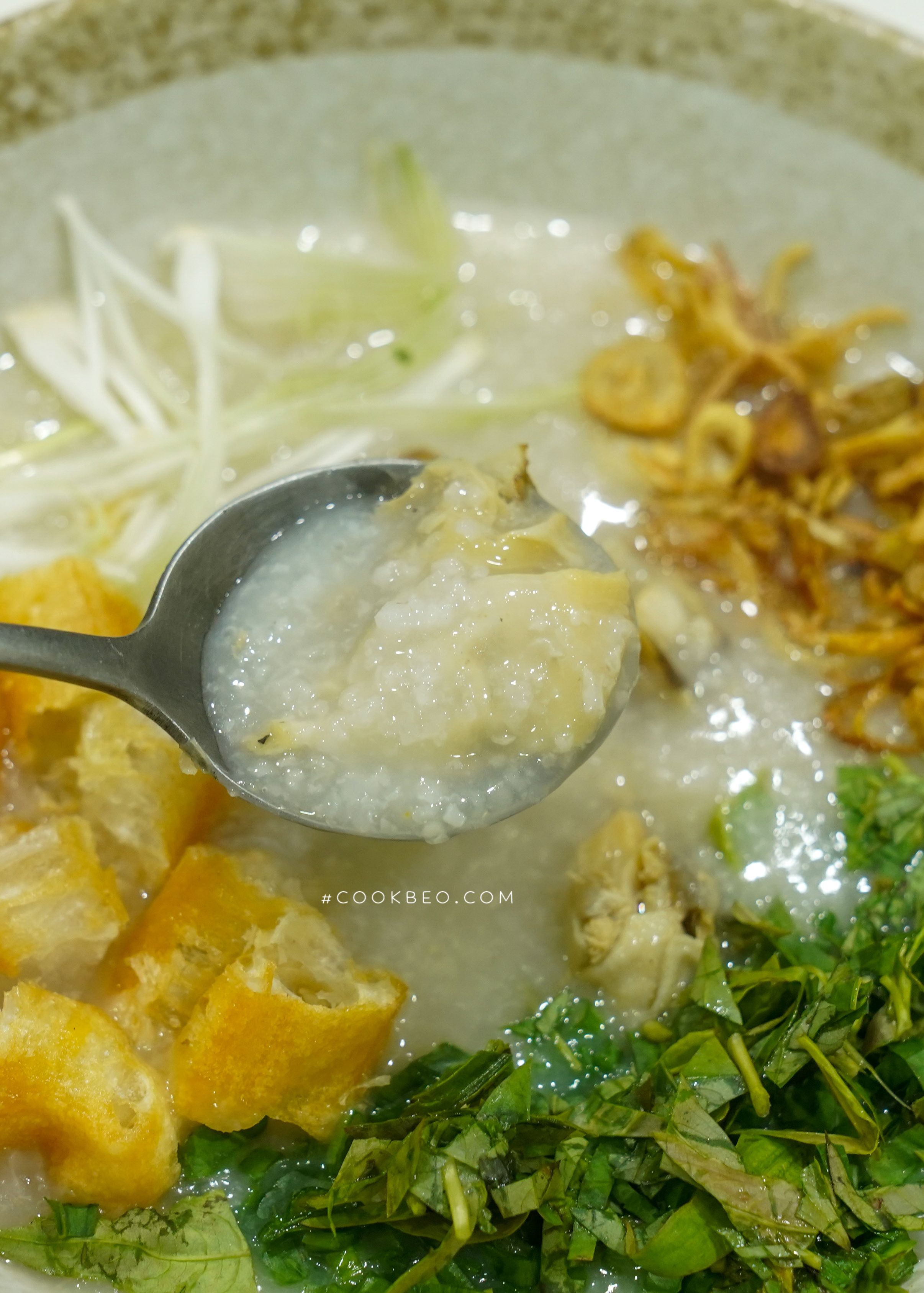
Chao Trai is easy to eat, provides calcium, and is good for the digestive system, especially for children who often experience night sweats, making this delicious and nutritious porridge a must for mothers. If you are cooking Chao Trai for weaning, be sure to check some notes at the end of this article.
In Hanoi, popular streets like Trần Xuân Soạn, Đội Cấn, Trần Khát Chân, and Lò Đúc are renowned for their delicious Chao Trai, highly rated by many people.
Ingredients
- 3kg Trai Dong
- 50g glutinous rice flour
- 150g regular rice flour
- 500g pork neck bones
- 100g dried onions
- 1 knob fresh ginger
- Spring onions
- Rau răm (Vietnamese coriander)
- Fish sauce, pepper, chili powder, MSG, seasoning powder, salt grains
- Crispy fried dough sticks (quẩy) to serve alongside
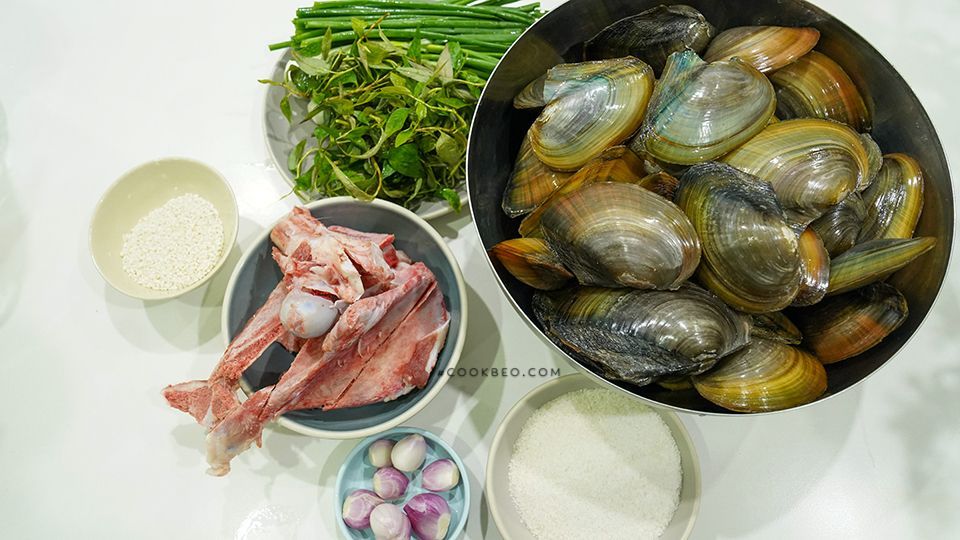
Ingredient Notes
- Glutinous rice flour and regular rice flour can be purchased at rice stores. Using flour makes the porridge cook faster and results in a smoother texture. If not using flour, you can use whole glutinous and regular rice or partially milled rice.
- Rau răm and fresh ginger are essential ingredients when cooking Chao Trai as they have warming properties, release fragrant aromas, eliminate any fishy taste, and counteract the coolness of the Trai.
- Besides pork bones, you can also use chicken bones to make the broth. Or simply use the water from boiling Trai to cook the porridge.
Instructions
Soak Trai
Soak the Trai in water to remove all the mud and sand. It's recommended to use rice washing water to soak the Trai, which helps to effectively eliminate mud and sand if you add a few slices of fresh chili and use 1-2 metal utensils like a spoon, chopsticks, or fork to aid in the soaking process. This is a cleaning tip for hard-shell seafood like Trai, snails, clams, and mussels that you should apply.
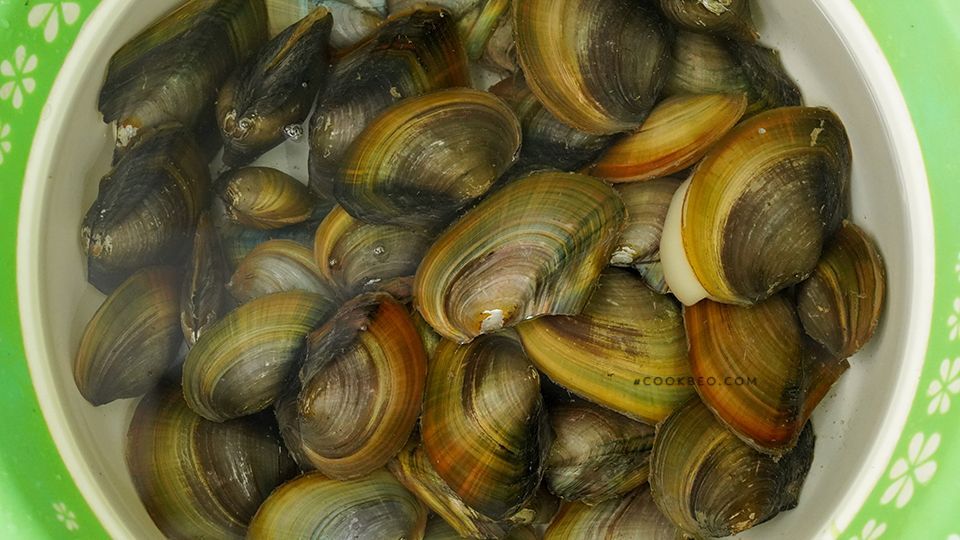
Soak the Trai for at least 1 hour, then scrub the Trai shells clean, rinse them, and set aside. If you have time, you should soak the Trai for about 2-4 hours, and remember to change the water during soaking to ensure the Trai is cleaner.
Prepare Pork Neck Bones
Rub the pork neck bones with salt grains, clean them thoroughly, then grill them for about 3 minutes at high temperature to remove all the red blood from the marrow. This helps to clean the bones and eliminate any unpleasant odors.
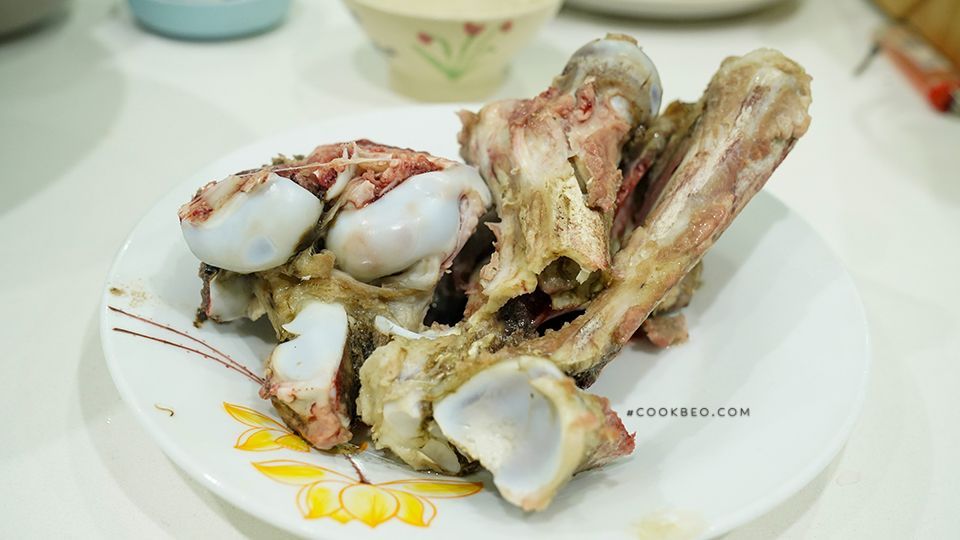
After grilling, rinse the bones again, bring a pot of water to a boil, and blanch the bones with salt grains for about 10 minutes.
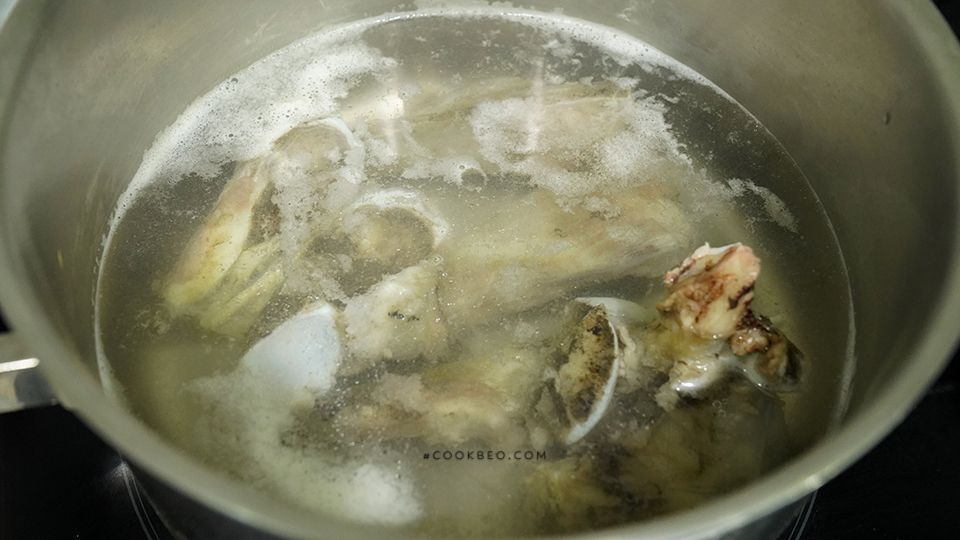
When blanching the bones, remember not to cover the pot lid so that impurities and odors can evaporate. After blanching, remove the bones, rinse them thoroughly, discard the blanching water, and replace it with fresh water to begin simmering the bones to make the broth for the porridge.
To make the bone broth more flavorful, add 2-3 pieces of grilled dried onions, roughly chopped, and peeled.

Typically, simmering pork bones for at least 3 hours to allow the broth to achieve a certain level of sweetness. The ideal simmering time for pork bones ranges from about 6-13 hours.
The amount of water to add for simmering the bones is approximately 2.5 liters. Initially, use high heat to bring the water to a boil, then reduce the heat to maintain a gentle simmer. After about 2-3 hours of simmering, the broth will reduce to about 1.5 liters.
Prepare Other Ingredients
Finely chop a portion of the dried onions and ginger. This will be used to stir-fry the Trai meat for enhanced aroma.
Slice the remaining dried onions thinly to make fried onions.
Pick and wash the spring onions and rau răm (Vietnamese coriander) thoroughly, then chop them finely.
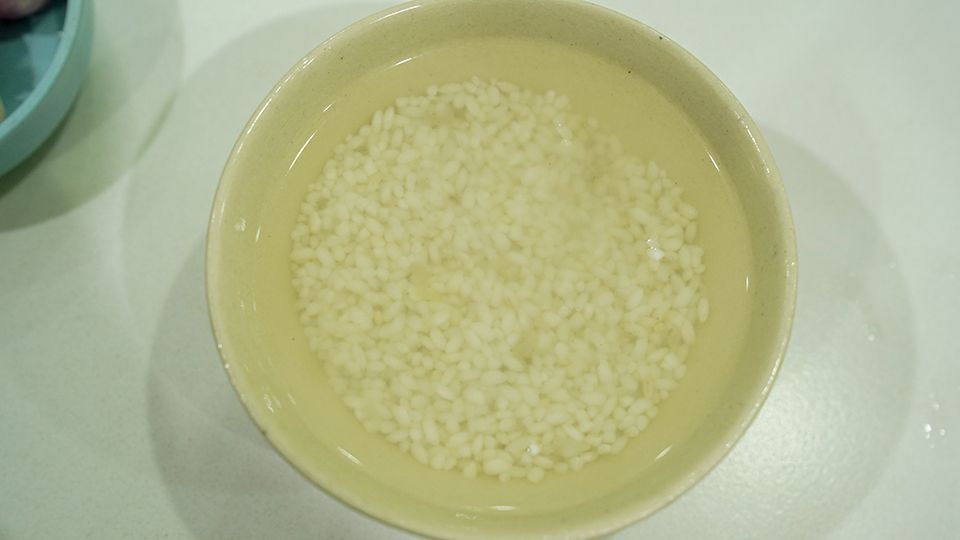
Boil Trai
After soaking and thoroughly rinsing, drain the Trai. Add water to a pot and place a few slices of fresh ginger to cook along with the Trai. Ginger helps to neutralize the coolness of the Trai, making the dish feel warmer for the eater.
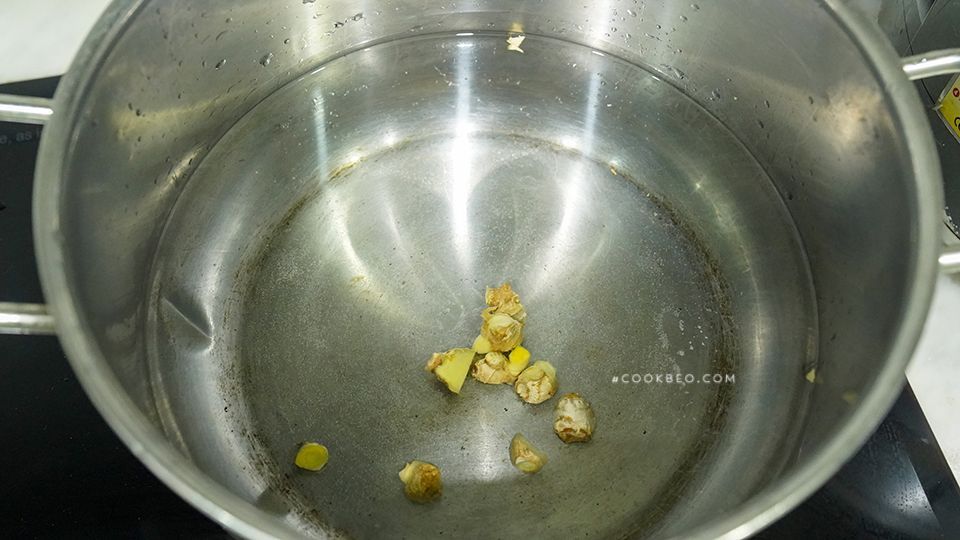
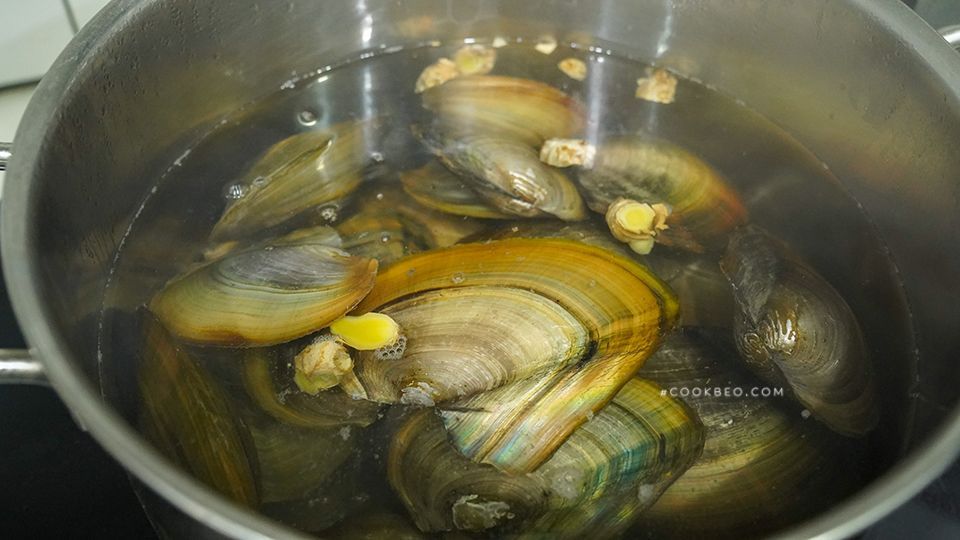
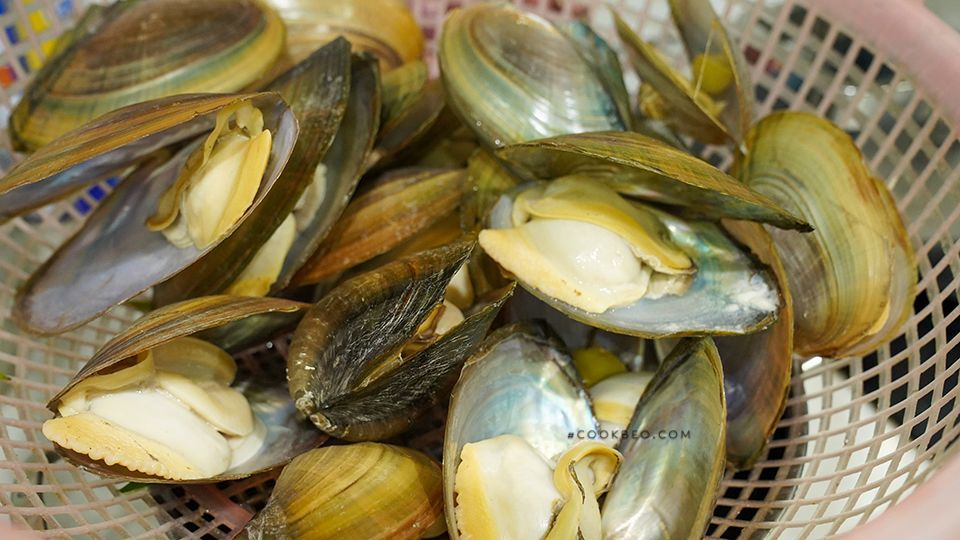
Prepare Trai Meat
After boiling, separate the Trai meat and place it into a bowl. Strain the boiling water and place it into a separate bowl, ensuring to collect only the clear broth and discard the sediment at the bottom of the pot.
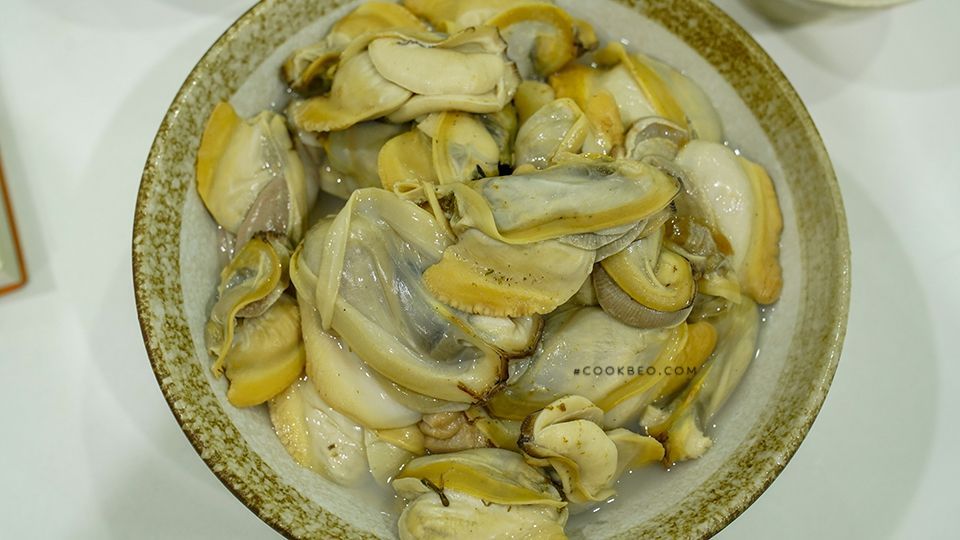
Remember to remove any dirty sediment from inside the Trai's belly, then rub the meat with salt, rinse it clean, drain the water, and slice it into small pieces as Trai meat can be quite chewy.

And to make the Trai meat more flavorful, marinate it with a bit of seasoning including: 1 teaspoon of seasoning powder, 1/2 teaspoon of MSG, 1/2 teaspoon of ground pepper, and 1 teaspoon of fish sauce.
Mix well and let the Trai meat absorb the seasoning for about 15 minutes. If you are cooking Chao Trai for small children, do not add pepper.
Make Fried Onions & Stir-Fry Trai
Heat cooking oil in a pan and add 1 teaspoon of flour while the oil is still cool, stirring well. The flour helps to absorb moisture, making the fried onions crispier. For the amount of oil, ensure it is enough to submerge the onions. Deep-frying the onions in enough oil will result in evenly cooked, crispy, and golden-brown fried onions.
Add the onions to the pan while the oil is still cool, after stirring in the flour. Fry the onions over medium-low heat. As the onions cook, they will float to the top. At this point, gently stir them with chopsticks, especially along the edges of the pan to prevent the onions from burning.
When the onions start to turn a light golden-yellow, remove them from the oil to drain. Since the onions continue to cook even after being removed from the oil, do not wait until they are a deep golden color to take them out. If the onions in the pan turn dark, removing them will cause the fried onions to become too dark or burnt. See the article How to Make Fried Onions.
After removing the fried onions, spread them out evenly to allow them to cool down.
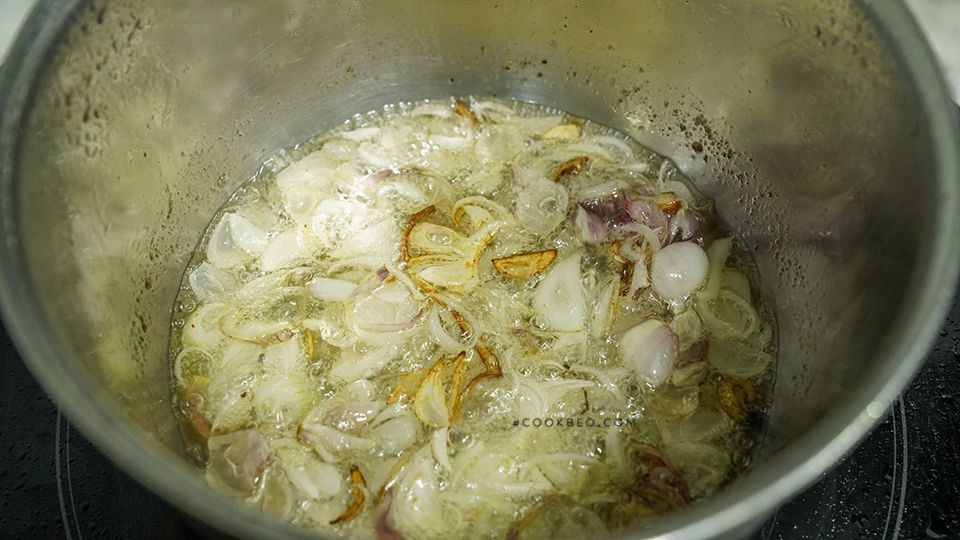
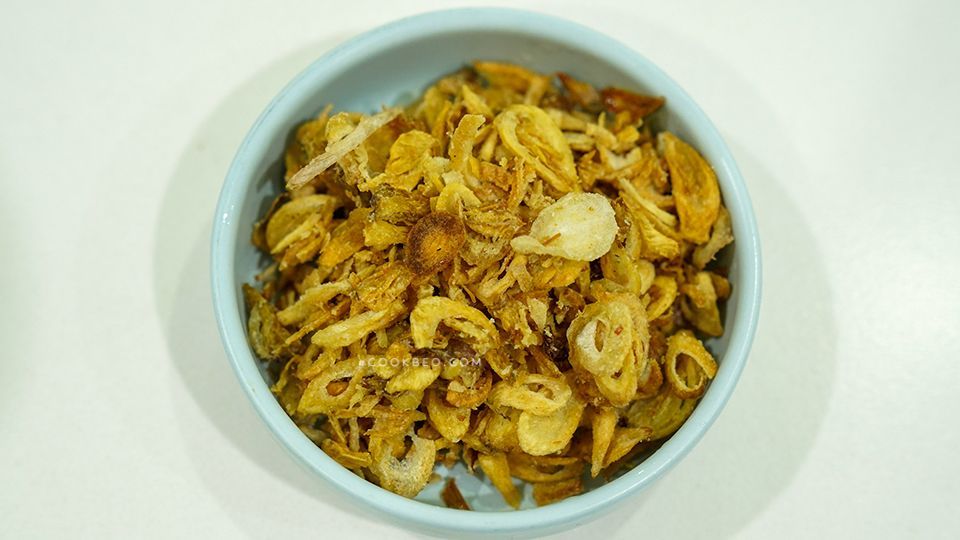
Drain most of the oil used for frying the onions into a bowl. Heat the remaining oil, then sauté the chopped onions and ginger until fragrant, then add the Trai meat to stir-fry over high heat.
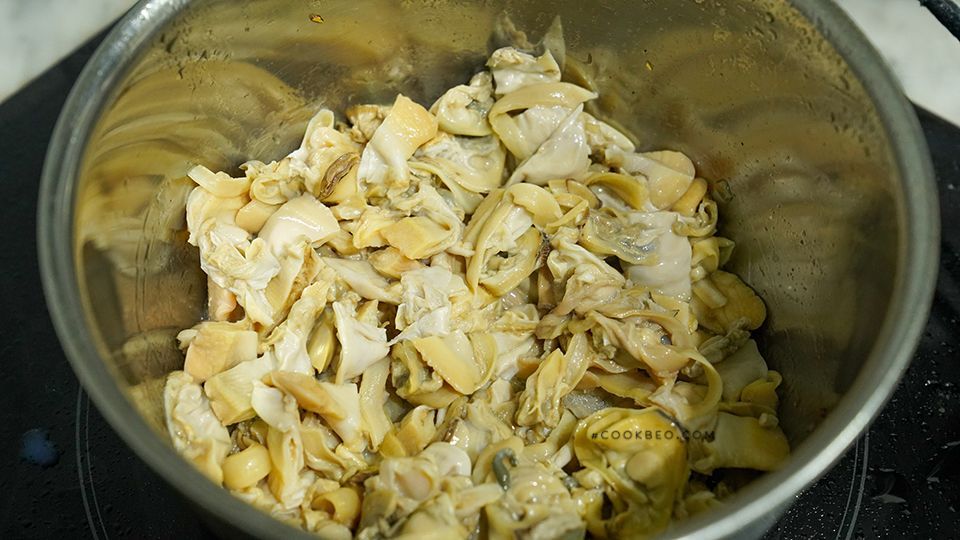
Stir continuously and stir-fry quickly for about 30 seconds, then turn off the heat. If you stir-fry for too long, the Trai meat will become tough. Transfer the Trai meat to a separate bowl.
Cook Chao Trai
After simmering for 2-3 hours, turn off the heat, remove the pork bones and dried onions. If the bones have meat attached, remove it and use it to cook the porridge, adding a rich flavor.
Next, add the Trai broth into the bone broth pot. The amount of water should be about 2.5-2.6 liters. Then, add the glutinous rice flour and regular rice flour, stirring well to dissolve the flour and prevent clumping or settling at the bottom. Then, turn on the stove to cook the porridge.
If using rice flour to cook the porridge, add the flour when the water is warm or cold to prevent clumping. If using whole grains or partially crushed rice, add them when the water is normally hot.
Turn the heat up slightly to bring the broth to a boil, then reduce the heat to maintain a gentle simmer, stirring well. Cook the porridge for about 15 minutes until the flour is fully cooked.
If using whole grain rice, stir occasionally to prevent the porridge from sticking to the bottom of the pot and especially to avoid the porridge becoming mushy. The cooking time for the porridge should be about 40-55 minutes to achieve a smooth and creamy texture.
The key to making delicious Chao Trai is the amount of water. How to make the porridge just right without having to add more water or broth to 'fix' it when it’s too thick or too thin.
According to Cookbeo's experience, when cooking porridge in general, you should use a ratio of about 13-14 liters of water per 1kg of porridge. This means that for 200g of rice flour as above (including both glutinous and regular rice flour), you need 2.5-2.6 liters of water. If using whole grains or partially crushed rice, you should add a little more, about 2.8-3 liters of water to achieve a properly textured porridge.
In case the porridge is too thick, you can add more water. If the porridge is too thin, mix a bit of tapioca starch with cold water, stir well, and slowly pour it into the porridge. Tapioca starch helps to thicken the porridge instantly. However, when pouring, you should control the amount to avoid the porridge becoming too thick again.
After about 15 minutes, when the porridge is smooth and creamy, add the stir-fried Trai meat, keeping a little aside to place on top of the porridge bowl along with fresh spring onions, fried onions, and crispy dough sticks (quẩy).
Stir well and season to taste. For the amount of porridge as above, season with 2.5 tablespoons of seasoning powder, 1/2 tablespoon of MSG, 1 tablespoon of seasoning powder, and 2 tablespoons of fish sauce. You can adjust the amount of seasoning according to your family's taste preferences.
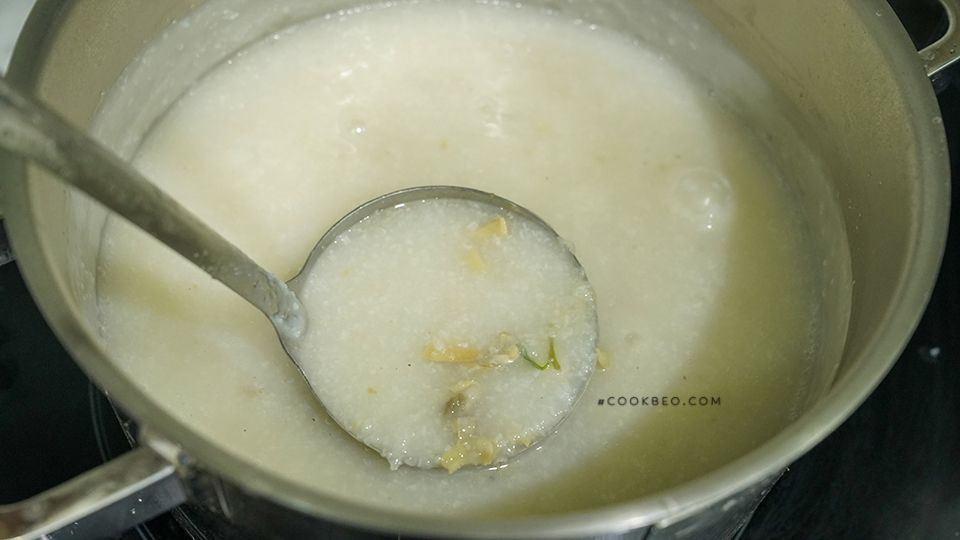
After seasoning to taste, turn off the heat and prepare to serve.
Add a bit of fresh herbs to the bowl, ladle the Chao Trai in, then sprinkle a little more fresh herbs, crispy fried dough sticks, fried onions, and Trai meat. Chao Trai should be eaten hot, accompanied by a little ground pepper and chili powder to enhance its appealing flavors.
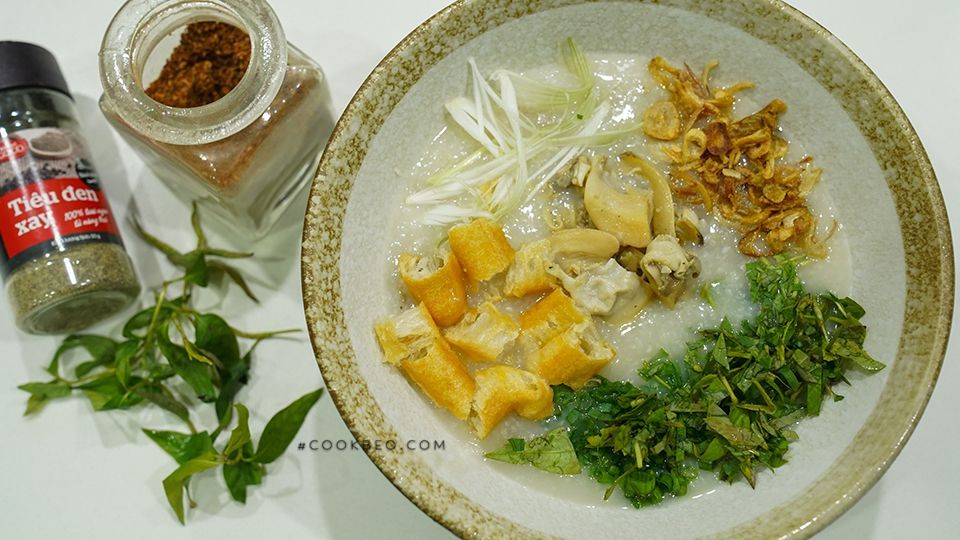
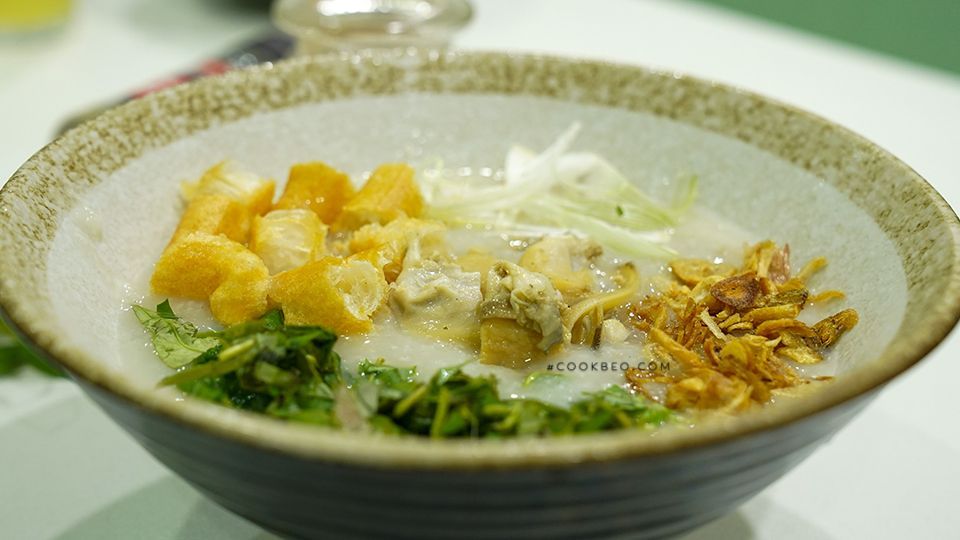
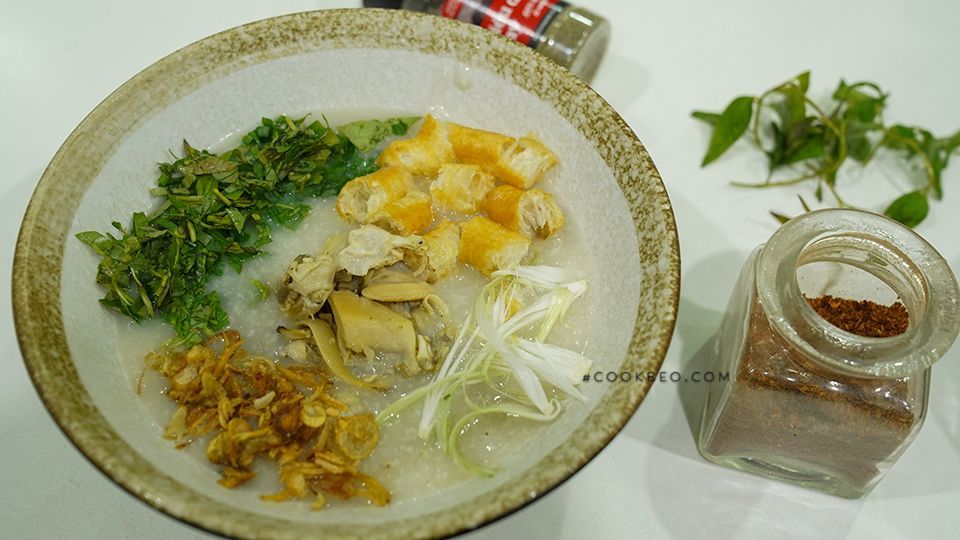
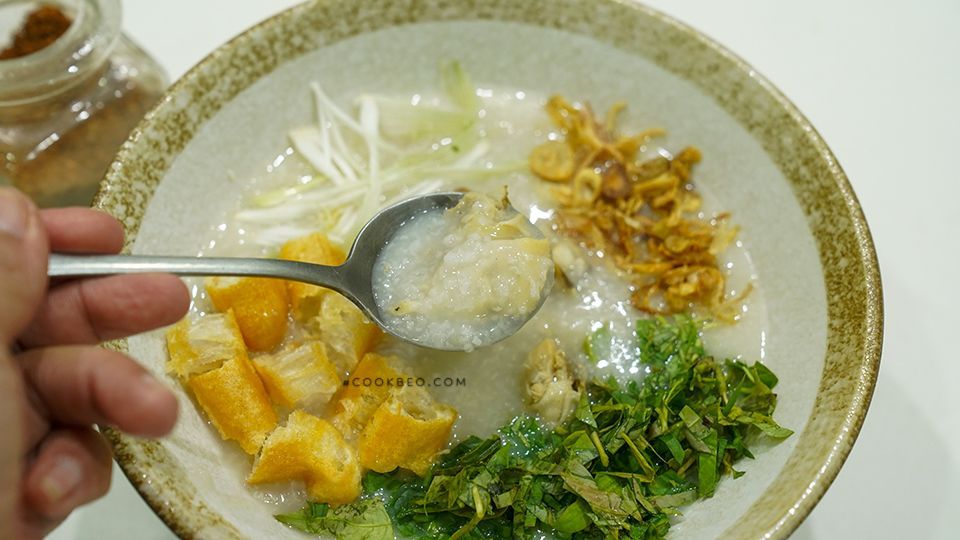
Video
Alternative Method
Cooking Chao Trai for Weaning?
Chao Trai, similar to Chao Trung Truc, is effective in treating night sweats in children. Additionally, Trai is a seafood rich in nutritional value. Children from 7-8 months are at the stage of starting to wean and get accustomed to various weaning foods, including Chao Trai. You can make slight adjustments to the above recipe to cook Chao Trai for weaning. Specifically:
- Do not use ginger, pepper, or rau răm. These ingredients have a spicy taste that is not suitable for weaning children.
- Regarding the rice, ensure the rice is milled finer than usual for easier consumption by the child, or use organic rice flour specifically for weaning children.
- Clean the Trai thoroughly and mince it finely instead of slicing. Also, simmer it longer to prevent the Trai from becoming tough.
- You can cook Chao Trai with pumpkin, carrots, or green beans to increase its nutritional value and diversify the flavors for the child to enjoy.
Above, Cookbeo has shared a detailed guide on how to cook delicious Chao Trai, ensuring the porridge is neither too thick nor too thin, tasty, visually appealing, and even more complete and enticing than those available on the market. Wishing you success in applying this recipe!




